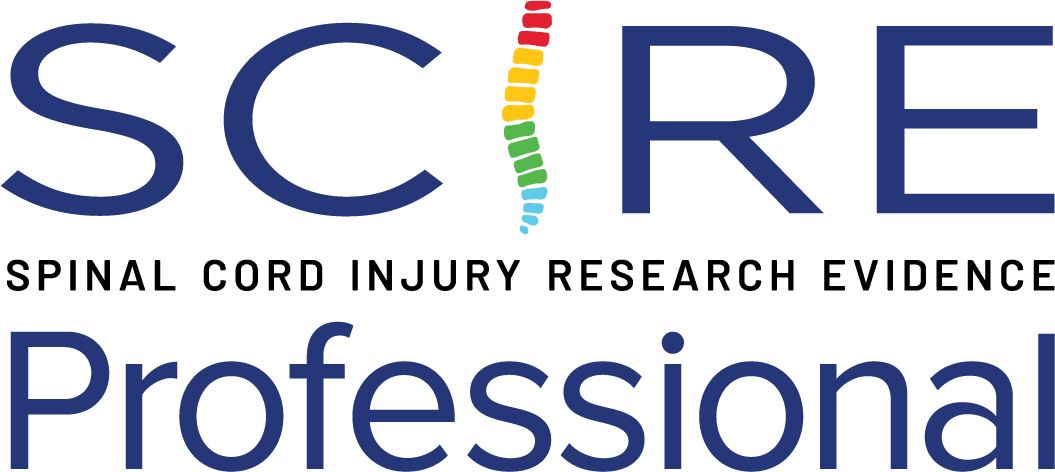Exercise and Activity-Based Therapy (ABT) for Sitting Balance
The effects on sitting balance in people with SCI have been investigated by several studies carrying out different exercise interventions.
Discussion
There were 12 studies that investigated the effects of various interventions (i.e., wheelchair skills training program, therapeutic exercise in unsupported sitting, seated/wheelchair Tai Chi, arm crank ergometry, kayak ergometry, Spinal Mobility, and activity-based therapy [ABT]) on sitting balance. Most of the participants had motor complete SCI (n=332, AIS A=113, AIS B=101, AIS C=47, AIS D=33).
After eight weeks of wheelchair skills training (Nam et al. 2023), in addition to conventional physical therapy, the wheelchair skills training program group demonstrated significantly larger increases in sitting balance. It should be noted that a significant relationship between maximal inspiratory pressure and balance, which appeared to be stronger in individuals with poor functional sitting balance, has been shown (Palermo et al. 2022). Considering the relationships between sitting balance and respiratory function, future research should focus on the effect of SCI-based breathing interventions on functional sitting balance.
One high-quality RCT examined the effect of an additional three weeks of task-specific exercises on sitting balance in people with acute SCI following six weeks of standard inpatient rehabilitation consisting of practice of activities of daily living (Harvey et al. 2011). Despite receiving more training sessions, there was no additional benefit for the experimental group compared to the control group on functional outcomes of sitting balance, possibly due to the short period of balance training. In a similar study measuring unsupported sitting, Boswell-Ruys et al. (2010) found overall improvements in both the training and control groups, though no significant differences between groups on upper body sway or T-shirt tests. In a small RCT, Kim et al. (2010) found that exercise training on an unstable surface (with both eyes open and eyes closed) significantly improved people’s performance on the mFRT and reduced swaying.
We found two studies assessing the effects of Tai Chi programs in people with SCI. Qi et al. (2018), found that the experimental group had significant improvements in static sitting balance and the psychological domain of quality of life. Similarly, Tsang et al. (2015) found that participants in the Tai Chi group improved their directional control and seated stability.
Three case series studies and one prospective controlled trial assessed sitting balance in participants with chronic SCI using similar therapeutic interventions (Spinal Mobility program and ABT) (de Oliveira et al. 2023; de Oliveira et al. 2019; Sliwinski et al. 2020; Larson 2022). The Spinal Mobility program comprised resistance exercises, aerobic conditioning, trunk stability, and health education for eight weeks and once a week (Sliwinski et al. 2020); meanwhile, ABT comprised task-specific training, weight-bearing tasks and whole-body muscle strengthening for 1 to 12 months and 1 to 4 times per week (de Oliveira et al. 2023; de Oliveira et al. 2019). Overall, significant improvements in sitting balance (mFRT, multi-directional reach test, seated reach test), sitting strength (peak force measured by a handheld dynamometer), functional independence (SCIM) or general mobility (Modified Rivermead Mobility Index) were shown after the intervention periods; however, the wide variance in the dosage in these studies makes difficult to extrapolate the results (de Oliveira et al. 2023; de Oliveira et al. 2019; Sliwinski et al. 2020; Larson 2022).
Sitting balance significantly improved with kayak ergometer training with substantial transfer effects to functional tests in the wheelchair (Bjerkefors & Thorstensson 2006; Bjerkefors et al. 2007). However, Williams et al. (2020) found that patients with SCI who enrolled in arm ergometry training improved on only some elements of static balance control, and none of the dynamic balance scores. Another study found that participants with SCI improved sagittal and frontal center of pressure (CoP) displacement after an 8-week open water kayak training program (Grigorenko et al. 2004).
Conclusions
There is level 1 evidence (from 1 RCT: Harvey et al. 2011) that the addition of task-specific sitting balance exercises, for three 30-min sessions per week, to a six-week standard inpatient rehabilitation period, resulted in no difference in balance outcomes in comparison with the standard inpatient rehabilitation period in participants with acute SCI.
There is level 1 evidence (from 1 RCT: Boswell-Ruys et al. 2010) that task-specific sitting balance exercises in participants with chronic SCI, three times a week for six weeks, provide significant improvements in maximal sitting balance range in comparison with no intervention.
There is level 2 evidence (from 1 RCT: Nam et al. 2023) that a wheelchair skills training program for eight weeks, along with conventional physical therapy, provides significant and larger improvements in sitting balance (measured by the ABLE) compared with only conventional physical therapy in manual wheelchair users with chronic tetraplegia.
There is level 2 evidence (from 1 RCT: Qi et al. 2018; and from 1 prospective controlled trial: Tsang et al. 2015) that seated Tai Chi training programs provide significant improvements in sitting balance (kinematic) outcomes in wheelchair users with subacute and chronic SCI.
There is level 4 evidence (from 1 pre-post study: Williams et al. 2020) that a 5-week arm crank ergometry training program provides improvements in some elements of static balance in patients with chronic SCI.
There is level 4 evidence (from 1 pre-post study: Sliwinski et al. 2020) that a Spinal Mobility program (comprising resistance exercises, aerobic conditioning, trunk stability and health education) improves sitting balance in patients with chronic SCI.
There is level 4 evidence (from 2 case series: de Oliveira et al. 2023; de Oliveira et al. 2019) that ABT improves sitting balance (seated reach distance), seated postural control (seated reach test), functional independence (SCIM) and mobility (Modified Rivermead Mobility Index); especially in earlier phases of ABT exposure, in patients with chronic SCI.
